

Rolling down memory lane:
A Classic Skating odyssey
2 Utah locals relive their childhood memories with a roller-skating journey from Orem to Sandy, celebrating the enduring legacy of Classic Skating

By Doug Wilks Executive Editor

By Burke Olsen Publisher
We are pleased to introduce you to The Digest, a sampling of some of the best stories written every day by the dedicated journalists at the Deseret News, Deseret Magazine and Church News. Ouyor hope is that you will make us your trusted news source each day at a time when there is confusion and contention in the nation.
The Deseret News brand stands for unimpeachable journalism centered on the issues most core to the human heart. While the Deseret News since its beginning in 1850 has evolved to meet the demands of its audience — reimagining print offerings, launching an acclaimed magazine and increasing the visibility and reach of its award-winning website — the publication remains committed to certain timeless ideals.
We stand for truth and light. We stand for faith and family. We stand for liberty and responsibility. We provide news and perspective, exploring society’s thorniest problems in search of solutions that will improve your life. That’s our commitment to our readers.
We invite you to discover what we can offer you:
Award-winning website
Our website, Deseret.com, is designed to be user-friendly and available on any device. Whether you’re at home on your
INTRODUCING 'THE DIGEST'
computer or on the go with your mobile phone, you can access our website for the latest news, analysis and commentary.
Mobile apps
Our apps for iOS and Android devices offer a seamless and convenient way to access the latest news, wherever you are. Choose what you want to read, save articles for later and receive push notifications for the breaking news you need to know.
Newsletters
Delivered straight to your inbox, our free email newsletters provide a curated selection of the most important stories of the day, as well as deeper dives into topics that matter to you. Choose from a variety of subjects and frequencies to tailor your news consumption to your needs.

Weekly print newspaper
For those who appreciate the tactile experience of a traditional newspaper, our twice-weekly print edition offers a comprehensive roundup of the week’s most important stories and opinions, including the most comprehensive high school, college and professional sports offerings in the state.
Deseret Magazine
In 2020, we undertook an ambitious endeavor by launching a new magazine with in-depth journalism, unique voices and principled points of view. The reception to the magazine has far exceeded our expectations. You can read more from the magazine online at Deseret.com/magazine or subscribe to have it delivered to your home or office.
Church News
The Church News remains one of our most popular offerings for those who want to know the latest news from The Church of Jesus Christ of Latter-day Saints. It’s available online at TheChurchNews.com and via iOS and Android apps. A print version is included in the Friday edition of the Deseret News.













Trale Mathis
By Meg Walter Deseret News
Rolling down memory lane: A Classic Skating odyssey
2 Utah locals relive their childhood memories with a roller-skating journey from Orem to Sandy, celebrating the enduring legacy of Classic Skating
Growing up along the Wasatch Front, for most of us, meant a childhood sprinkled with visits to Classic Skating. If you were attending a birthday party in the 1990s, it was at either 49th Street Galleria or Classic Skating. Maybe Seven Peaks water park if it was a summer birthday. But far and away the most popular party location was Classic, with its neon carpet, greasy arcade games, aroma of cheap pizza with a hint of vomit and well-worn skating rink. We loved it there.
It was at Classic Skating where I first held hands with a boy during a mating ritual called “Snow Ball,” wherein young men would line up on one side of the rink and girls would line up on the other. As the lights dimmed and a slow song began to play — in this case it was “Kiss The Girl” from “The Little Mermaid” — the boys would approach the girls, ask them to skate, and together they would circle around the rink, hand in hand. I remember wondering if holding hands was always such a sweaty ordeal and feeling relieved when the lights came back on and we all went back to flailing on our skates to peppier music. Many of my peers experienced similar life milestones within the walls of Classic in our formative years. Stop any Utah native on the street and ask them to tell you a story about Classic and they’ll have one, no question.
It’s appropriate, then, that two Utah natives paid homage to our collective childhoods at Classic by roller-skating from the location in Orem to the Sandy location in the grand tradition of Utah men participating in made-up, grueling physical activities for the lolz like the Whale-o-thon runners and the Crown Burger consumption tour.
Alexander Nielsen and Weston Borup attended Timpanogos High School together and spent their weekend evenings at Classic Skating’s disco nights, hitting Deseret Industries (Utah’s most prominent thrift shop) for disco-appropriate outfits and Beto’s (Utah’s most prominent drive-thru burrito chain) after.
“I remember looking around at all the other people there and thinking, ‘Oh yeah, this is where we belong,’” Nielsen told me during a call. The two men continued to skate together even while attending school at different universities. Borup would drive from Utah State University in Logan to skate with Nielsen in Provo, where he attended BYU.
“At BYU, the typical college party was much different than the typical college party at any other university,” Nielsen explained. “We had skate parties in the parking garage of Provo apartment buildings and that was like a crazy night.”

Isaac Hale, Deseret News
Alex Nielsen, of Millcreek, left, and Weston Borup, of Spanish Fork, roller-skate at
Eventually they both finished school. Nielsen got married and had a daughter, and Borup joined the Air Force, where he was an officer for five years. When filling out his application to join the Air Force, one of the fields required him to list any risky activities. He wrote roller-skating.
Recently, Borup moved back to Utah, and the two skating enthusiasts decided it was time to fulfill a long-held dream.
Years ago, during a meeting of BYU Roller Skate Club, Nielsen found himself wondering how many miles he had skated after looping around the rink over and over. “I remember thinking, if we stretched out this rink, what’s the distance that we could go?” he explained. He shared his rumination with Borup, and they concocted a dream of a day when they would skate a couple of laps in the Orem Classic, then skate all the way to Sandy and do a couple of laps there.
That day arrived on June 10, 2025.
They began their journey at 10 a.m., right as the Orem location opened. After one lap, which the employees let them do for free upon learning of their plans, they began their journey to Sandy.
They made their way through a series of connecting trails, primarily uphill, in roller skates. They had water in their packs, and stopped once to get lunch at Wendy’s, where they skated right on up to the cashier, and once to jump in a river and cool off.
They arrived in Sandy at 6 p.m., eight hours after they left Orem. “I remember opening the door to get into Classic Skating,” Nielsen told me. “We felt a rush of air conditioning and it was like an oasis.”
Nielsen and Borup stumbled in through the front doors,

dusty and haggard, barely making their way to the front desk, where a woman was working. They told her what they had just accomplished, and she in turn asked if they would be skating to the Layton location next. Unbeknownst to Nielsen and Borup, there is a third Classic Skating another 60 miles north of Sandy in Layton.
They decided not to spend 10 more hours or so skating to the third Classic and instead made a few celebratory laps around the rink and ordered Beto’s breakfast burritos.
“It was really hard,” Borup told me when I asked how they felt after the ride’s conclusion. “But when you do hard stuff like that, you feel good.”
Nielsen made the journey in secondhand Riedell roller skates, because, as he puts it, “I felt like it was more fun to have trashy roller skates.” This decision didn’t make for the easiest recovery, but both he and Borup are now back to doing what they love now — skating at the rink.
They’re chronicling their adventures on Instagram under the handle @skooterbooters, where they welcome other skate lovers to join their community and possible future Classic pilgrimages.
“I’ve made a lot of friends through the roller rink, people that I probably wouldn’t meet any other way,” Nielsen told me. “I think there’s something unique about the kids here. They’re exceptionally goofy in a really fun way.”
“Exceptionally goofy in a really fun way” does, pretty accurately, describe my Utah childhood, due in no small part to the many visits to Classic Skating. And while I have no desire to skate 40 miles in homage, mostly because I no longer own skates, I’m glad Nielsen and Borup do and did.





Isaac Hale, Deseret News
Alex Nielsen, of Millcreek, performs a trick as he roller-skates at Classic Skating & Fun Center in Orem on Saturday, Sept. 13, 2025.
By Ethan Bauer Deseret Magazine
DESERET MAGAZINE
How quilting became fine art
The history of quilting, from Jenny Doan to Carolyn Mazloomi
The fabric she chooses features a melange of blues, from sky to Carolina to navy. Pulling in swatches of yellow, gray and white, she snips each one into a shape. She selects shapes to sew to other shapes and to her blue base, the accents helping to form a square. Then she repeats the process, block after block. Their sizes vary, because this is a human creation, but the results fit together in uneven rows. Eventually, a perimeter of twisting leaves frames a border of squares surrounding a deep-blue field dotted with what look like little white tadpoles. A massive eightpoint star of stunning complexity rules from the center of the quilt.
Laurie Robinson, an understated 62-year-old from Logan, Utah, is pleased. Behind the quilt’s face, she will fill it with batting — stringy fluffs of practical cotton, luxury wool or an economical polyester blend — which lends both insulation and structure to the finished piece. A quilt isn’t a quilt without that, but she is most particular about the backing, the side meant for human contact. Some use more scraps, cozy flannel, elegant voile or lightweight quilters’ linen, but she prefers a velvety microfiber called “minky.” She doesn’t make modern fine-art quilts, which can be intricate like tapestries and are best viewed on a gallery wall, from a safe distance. No, Robinson’s quilts are made to be snuggled in as much as they may bring spirit to a new home or comfort to a funeral.
Once the quilt is assembled, she sends it out to a machine quilter for finishing. Guided by a computer, this modern marvel can sew complex patterns into the quilt’s surface, like dragons or sailboats, or it can simply seal the edges and connect the three layers in precise harmony. Robinson admits this with a tinge of embarrassment, as if this makes her quilts not fully her own. Hand-finishing is more intricate but also more time-consuming, and technology has found a role in this space as in any other part of the modern world. Besides, she has other things to do.
After all, quilting is often a social pursuit. Robinson has twice served as president of the Needles and Friends Quilt Guild, a local group with about 100 members, mostly women, ranging in age from their 20s to their 80s. They gather each Tuesday to work together, catch up on their projects and share a community born of a centuries-old practice that is still thriving, in sometimes innovative ways. This most American of folk arts has nestled itself comfortably into these new times, with a presence at trade shows, on social media and even in the finest art museums, where it is seen as a radical and unique medium for storytelling. But here, in Logan, quilting is still about making connections, one stitch at a time.
The history of quilting
Squint hard enough and you might see a pattern on this ancient chunk of ivory, carved around 3000 B.C. and worn by the elements across the intervening millennia. “The Ivory King,” a statuette now ensconced at The British Museum in London, portrays an aging ruler whose robe or garment bears a diamond pattern in columns with a decorative border. This relic is often cited as the earliest known evidence that humans made quilts. Even if this item would have been worn as a robe over the monarch’s shoulders, it speaks to the place quilting held in society.
One of the oldest surviving quilts hangs three miles away in South Kensington, in the Medieval & Renaissance Galleries of the Victoria and Albert Museum. Crafted in Sicily in 1390, the “Tristan Quilt” depicts the tale of Tristan and Iseult — a Cornish hero and his Irish bride — in linen, beige-on-beige, through 14 graphic panels shaped with white and brown thread and cotton stuffing. In nearby halls, the museum’s quilting and patchwork collection displays a range of sumptuous 17th-century bedcovers and present-day art projects and fashions.
The patchwork quilts that are now so familiar across middle America didn’t emerge until early American colonists forged west. While their wealthier urban counterparts on the coast could import specialized fabric for “applique” quilts as status symbols, those living on the frontier had to use and reuse every scrap of fabric at their disposal. The skills they developed in so doing were later turned to a new, expressive dimension, when the industrial revolution made fabric more abundant and therefore affordable. Perhaps this was when quilting as a folk art was born, a creative form passed down through families and communities rather than institutional education or even apprenticeships.

That practice flourished in the Intermountain West, where pioneer women melded function, thrift and artistry to create their own tradition. Like their know-how, their quilts became treasured heirlooms — some passed down for over 160 years — and records of their times. Fabrics and patterns speak of their poverty and prosperity, while texts and motifs enshrine feelings, anxieties, beliefs and family histories. “The art of quilting can help us share stories of the relationships that make up our individual and communal identities,” observed an archived bulletin
Illustration by Lexi K. Nilson for Deseret Magazine
for a 2012 exhibit at the Church History Museum in Salt Lake City. “Seemingly commonplace quilts can illustrate the complex nature of human ties.”
In a time when women’s voices were not always welcome in mainstream society, quilts offered an outlet for expression and even solidarity. In 1836, abolitionists in Massachusetts sold the first known “Abolition quilt” at a fundraising event. Sized for a crib, it features a grid of eight-point stars in burgundy, slate blue, olive green and more colors, with a poem by Quaker author Elizabeth Margaret Chandler transcribed in its center block, reminding readers to think of enslaved mothers whose children had been taken. Over the next century, women made quilts to support temperance, women’s suffrage and patriotic loyalty during the Great War.
Quilting became its own frontier in the 20th century with the arrival of the modern art movement, which expanded the boundaries of what could be defined as art. Alongside schools like impressionism or Dadaism arose smaller ideas like “found art” — when artists highlight the beauty in neglected or ordinary objects. Emelie Gevalt, deputy director of the American Folk Art Museum, explains that artists used quilts to package found art objects, turning shreds of the past into raw materials that let them explore budding ideas of “Americanness.”
Immigrants have always formed part of that patchwork. In 1933, Anni Albers came to the United States from Germany, a trained artist who chose to work in textiles. She taught weaving at the respected Bauhaus school until she fled Nazi persecution of the Jews in her country. Bringing her expertise stateside, she worked to blur the traditional line between craft and fine art, elevating quilts from county fairs to eminent museums. Today, fine art quilts are not old blankets but a modern medium, analogous in a way to oil paintings or marble sculptures.
Still, the heart of quilting is among the people, a way to communicate feelings, whether welcoming a newborn or mourning a loss — sometimes on a grand scale. Launched in 1987, the AIDS Memorial Quilt eventually became history’s largest community art project, piecing together 54 tons of patchwork, each piece weighed down with grief and memory. Similarly, the United in Memory 9/11 Victims Memorial Quilt consists of more than 140 panels, each remembering 25 victims of the 2001 terrorist attack, enough to cover five football fields.
And quilting is still about people. This October, more than 40,000 will descend on the International Quilt Festival in Houston, hoping to learn, source supplies or simply to glimpse something beautiful that has meaning to them. It’s the largest trade show in a roughly $5 billion industry, hosting workshops, guest speakers and more than 1,200 quilts. But it’s just one of many such events around the world, from Amsterdam to Nairobi, Santiago to Yokohama, each devoted to a craft that seems as persistent as the tough survivors who created it.
Quilting comes to YouTube
Picture a table runner, longer than it is wide. What looks like a simple checkerboard — alternating black, white and deep red squares against a red background with black borders — becomes more intricate on closer inspection. Each red square features a smaller grid of red and black; each white square is dotted with silvery spirals. It’s a decorative piece, displayed mostly for its instructional value in a 2009 YouTube video meant to teach viewers how to assemble a standard “four patch” pattern. It was also the first quilt Jenny Doan ever shared on the platform. She didn’t expect her new tutorial business to go too far. “Nobody my age is ever gonna go to the computer to learn anything,” she told her internet-savvy kids. Lucky for her, they insisted. At 51, she needed to replace the retirement savings she and her husband had lost in the financial crisis of 2008, and while she was a relative newcomer to quilting — a hobby she’d picked up after moving to Hamilton, Missouri, 11 years before — she had a knack for it. She also had the kind, patient demeanor of an aunt who brings pies and scrapbooks to a family reunion.
Doan couldn’t have been more wrong. Her content resonated far and wide — and fast. She launched the Missouri Star Quilt Company, which today has more than 970,000 subscribers on YouTube, and counting. Her matter-of-fact videos have been viewed nearly 350 million times. Now 68, she has become the biggest quilting influencer in the world. Forbes even dubbed this Latter-day Saint grandmother the “Oprah of quilting” and listed her in its 50-over-50 list in 2022. There are now 27 quilt shops in Hamilton, making it a “Disneyland for middle-aged women,” in her words. Her approach was always simple: to make quilting accessible. Maybe that makes her more like Bob Ross, the iconic, frizzy-haired host of “The Joy of Painting,” which aired on PBS until his death in 1995. Like Ross, Doan emphasizes happy accidents over perfect quilts. “Mine are not so perfect and fine,” she admits, “but they’re mine.” She wants to see her creations “loved and worn out,” not stored away.
intentional theme in Dr. Carolyn Mazloomi’s work. “When (Americans) think about quilts, they think about the quilts their mothers made, their grandmothers made,” says the 77-year-old Louisiana native. “So why not use a quilt to tell a difficult story?” Mazloomi specializes in “narrative quilts” that often depict the experience of Black Americans, from tragedies like the 1921 massacre that decimated Tulsa’s “Black Wall Street” to triumphs like Marian Anderson singing “My Country, ’Tis of Thee” at the Lincoln Memorial in 1939, after she was shunned for her race by the city’s cultural venues.
The widely acclaimed artist first came to quilting almost 50 years ago when she encountered a “mesmerizing” piece from the Kentucky Appalachians, with patchwork in the center and appliquéd eagles in each corner. Ignoring the “no touching” sign, she ran her hand over the stitching and felt something that “touched my spirit, my soul,” she says. Later, her own first quilt came out of the wash looking like “a three-dimensional fried egg.” Still, she persisted, eventually finding her own hand and her own voice. Her quilts visually narrate the stories of renowned Black figures like Emmett Till, Rosa Parks and the Tuskegee Airmen, alongside intimate portrayals of a grandmother’s love, a gospel choir and little boys shooting marbles.
Longing for the company of a quilting circle, Mazloomi placed a magazine ad for fellow Black quilters in 1985, attracting nine responses. That started the Women of Color Quilters Network, a group that now has 1,500 members — with enough sway to replace the headstone of Harriet Powers, the freed slave who became the “Mother of African American Quilting” in the 1800s. The Network’s quilts were also featured recently at the Smithsonian American Art Museum. “To know that those quilts are there forever for our descendants to come and look at those quilts in public,” Mazloomi says, “it’s important.”
She’s now in the Quilters Hall of Fame and has seen her work featured at major venues like the Smithsonian, the American Folk Art Museum and the Museum of Art and Design in New York City (she also has a doctorate in aerospace engineering). But her favorite quilts feature her grandchildren. “Each one has a quilt, and I plan to give them more,” she says. She has time. “Cloth is a cradle-to-grave affair. It’s the first thing we’re swaddled in at birth. It’s the last thing that touches our body upon our death.”
THIS STORY APPEARS IN THE OCTOBER 2025 ISSUE OF DESERET MAGAZINE. LEARN MORE ABOUT HOW TO SUBSCRIBE.







While Doan has made art quilts, she refuses to judge competitions, because that would go against her guiding principles. “I love blessing the lives of the people around me with something that will keep them warm and feels like a hug around them,” she says.
From bedrooms to museums
A story jumps from the cloth in striking black-on-white, with leafy green highlights. A Black family is on a road trip, with suitcases piled atop what looks like a 1940s Buick. Dad wears a suit and carries bags while Mom flaunts a hat over her Sunday dress and kids eyeball a picnic basket freighted with fruit and drinks. Compasses anchor each corner, but one image looms over the scene: “The Negro Motorist Green-Book.” It’s left for the viewer to discover that this was a safety-minded travel guide for an era when it wasn’t always safe for Black folks to be “just passing through.” Quilts connote warmth and comfort, while this story is anything but. That contrast is an

BYU engineers design 150 microscopic temples
Engineers at Brigham Young University created tiny replica houses of the Lord to honor BYU’s sesquicentennial
By Carly Ludlow Church News
PROVO, Utah — In celebration of Brigham Young University’s 150th anniversary, BYU electrical engineering professor Greg Nordin and student Callum Galloway created 150 microscopic 3D-printed replicas of existing temples.
These temples were all completed on July 31, 2024, in anticipation for the anniversary. The 150 temples were laid on a 12-by-19-millimeter microchip in a 10-by-15 grid. Each temple had measurements of about 1-by-0.5-by-0.3 millimeters, about the size of a poppy seed.
“When we heard about the sesquicentennial ‘Beacons of Light’ celebration, we thought, can we use this superhigh-resolution 3D-printing capability that we’ve developed to create something special?” said Nordin in a BYU news release.
With 382 temples announced, under construction or dedicated, these engineers chose 150 different floor plans, including temples such as St. George, Washington D.C., San Diego, Provo City Center, and Salt Lake.
“There are a lot of temples that have very, very similar floor plans,” Galloway said. “So I went through and I did research finding the first 150 chronological temples that had unique floor plans, and that gives the most variety to the chip.”
According to the news release, Galloway was in Nordin’s lab when the project was first proposed. He then developed the project further and was at the heart of the final product.
Each temple is carefully designed on a carbon-backbone-based material for the 3D printing, projecting ultraviolet images to project one after another to build different layers of these temples.
Through a process called photo polymerization, the molecules in the materials link in chains and result in recognizable tiny polymer temples.
“It’s rewarding how we can enjoy this technology that we’re using in both an artistic and a spiritual way,” Galloway said. “Engineering is inherently art, and the best art and the best engineering are born out of passion. That’s something I see very much in this lab.”



Callum Galloway
The microscopic temple replicas that Brigham Young University engineers 3D-printed in Provo, Utah, on July 31, 2024, in anticipation for the 150th anniversary of BYU.
Callum Galloway
The 3D-printed microscopic temple replicas by Brigham Young University engineers.
Callum Galloway
A microscopic replica of the Salt Lake Temple that Brigham Young University engineers 3D-printed in Provo, Utah, on July 31, 2024, in anticipation of the 150th anniversary of BYU's founding.



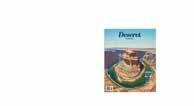
















Our spacious independent living cottages (1,300–2,100
ft.) feature two bedrooms, two baths, a den, fireplace, patio, and double garage. With full maintenance included, you’ll spend less time on chores and more time enjoying chefprepared meals, weekly housekeeping, 24/7 support, and a warm, welcoming community. Don’t wait—our new cottages are filling quickly. Live your lifestyle, your way at Cedarwood at Sandy.
THE DESERET NEWS 2025 Gift Guide
We have something for everyone

By Lois M. Collins Deseret News
Holiday bells will soon be jingling and cash registers ka-chinging. At Deseret News, we want to help you find the perfect gift for the people you love. That means a little bit of self-care, a lot of play time and some gifts that require some hands-on help because nothing feels better than building. We’ve got ideas, from the beautiful to the boisterous, so look around. And Merry Christmas!












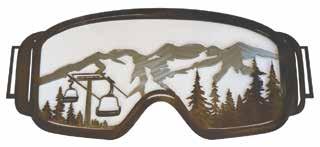





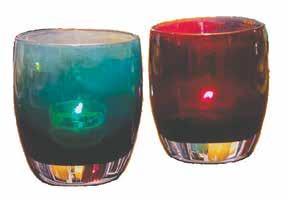




































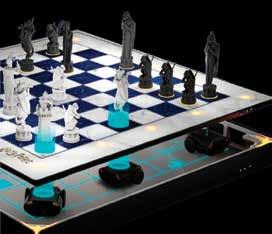



















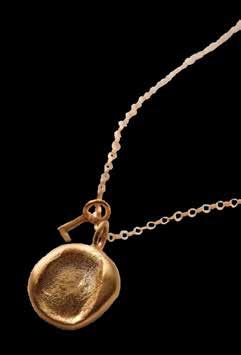


Center Your Celebrations in Christ

















Building a robot
Can take many days.
Help Edgar reach Edith By following this maze!
Use Edith’s secret code to solve this Halloween riddle.
Edgar’s made a blob of foam
And you can make one in your home! Zany and bubbling, And a tiny bit troubling, As out of your lab it may roam!

Fill the jar halfway with vinegar.

What did you observe?

Add a couple squeezes of soap. Stir gently.
Add drops of food coloring. Place the jar on a baking sheet. Add a large spoonful of baking soda






Find the words by looking up, down, backwards, forwards, sideways and diagonally.
Look through your newspaper to find: A pumpkin Stormy weather
An old house Halloween candy The moon A word containing the letters B-O-O

EVENTS
COMMUNITY & MARKETS
CROSS E RANCH FALL FESTIVAL 2025
DATE: Nov. 1, 2025
TIME: 10am-10pm
LOCATION: 3500 North 2200 West - SLC Adventure Farm, Corn Maze, Pumpkin Patch, Pig Racing & More!
HOLIDAY BAZAAR
DATE: Nov. 1, 2025
TIME: 6:15pm–9:30pm
LOCATION: St. Paul Lutheran gym, Ogden, UT 84403
Find gifts for the holidays made by local artisticians. Come shop while your children craft then have lunch!
2025 PROVO ART STROLL
DATE: Nov. 7, 2025
TIME: 6pm-9pm
LOCATION: Downtown Provo, UT 84601
Over a dozen businesses host local artists and entertainment for you to enjoy!
CHRISTMAS VILLAGE GALA AND FIREWORKS SHOW
DATE: Nov. 22, 2025
TIME: 6:30pm-7:30pm
LOCATION: 25th St. & Grant Ave - Ogden
Happy Holidays! Santa is planning his arrival in Ogden with the Holiday Electric Light Parade.
CONCERTS & LIVE MUSIC
PENTATONIX: CHRISTMAS IN THE CITY TOUR
DATE: Nov. 8, 2025
TIME: 7pm
LOCATION: 3200 S. Decker Lake Dr. - West Valley City Pentatonix reimagines, reinvigorates, and redefines acapella
JOHN LEGEND - GET LIFTED
20 TH ANNIVERSARY TOUR
DATE: Nov. 20, 2025
TIME: 8pm
LOCATION: 3200 S. Decker Lake Dr. - West Valley City
John Legend is an award-winning singer, songwriter, and pianist known for his fusion of R&B and soul music.
THE HAPPY FITS
DATE: Nov. 21, 2025
TIME: 8pm
LOCATION: 536 West 100 South - SLC
The Happy Fits are an indie rock/ pop band from New Jersey known for their high-energy, catchy sound featuring an electric cello instead of a bass guitar.
OF MONSTERS AND MEN
DATE: Nov. 22, 2025
TIME: 8pm
LOCATION: 536W 100S - SLC
Of Monsters and Men is an indie folk-rock band known for their story telling in their songs.

JESSE Mc CARTNEY
DATE: Nov. 7, 2025
TIME: 7pm
LOCATION: 235 North 500 West - SLC
Jesse McCartney is a pop singer and actor known for his time as a teen star.
THEATER & COMEDY
A MIDSUMMER NIGHT'S DREAM
DATE: Nov. 7–15, 2025
TIME: 7:30pm
LOCATION: Capitol Theatre 50 W 200 S Salt Lake City, UT 84101
This comedic adaptation of Shakespeare’s A Midsummer Night’s Dream blends seamlessly into a magical forest filled with mischievous fairies and a love story.
A CHRISTMAS CAROL
DATE: Nov. 28–29, 2025
TIME: 2pm
LOCATION: 9900 S Monroe St - Sandy
Step into the enchanting world of Charles Dickens with a stunning new staging of the beloved holiday tradition.
LAUGHING STOCK IMPROV COMEDY
DATE: Nov. 29, 2025
TIME: 10pm-11:30pm
LOCATION: 602 E 500 S Suite E101 - SLC
Short form improv comedy that is live and hilarious! You bring the suggestions, we perform the skits.
SPORTS
UTAH UTES FOOTBALL VS. CINCINNATI BEARCATS FOOTBALL
DATE: Nov. 1, 2025
TIME: TBD
LOCATION: Location: 451 S 1400 E - SLC
The Utes host the Bearcats in a Big 12 showdown
MINNESOTA TIMBERWOLVES VS. UTAH JAZZ
DATE: Nov. 10, 2025
TIME: 7pm
LOCATION: 301 W South Temple - SLC Timberwolves take on the Jazz in early-season NBA action.
LOS ANGELES LAKERS VS. UTAH JAZZ
DATE: Nov. 23, 2025
TIME: 6pm
LOCATION: 301 W South Temple - SLC NBA matchup as the Lakers visit the Jazz
BYU COUGARS WOMEN'S VOLLEYBALL VS. UTAH UTES WOMEN'S VOLLEYBALL
DATE: Nov. 26, 2025
TIME: 6pm
LOCATION: 1000 N University Ave. - Provo
A rivalry takes the court as the Cougars and Utes battle for state bragging rights.
Scott G Winterton, Deseret News
Fresh homemade donuts at the Cross E Ranch during the Fall Festival in North Salt Lake on Sept. 24, 2024.

GAIN CONFIDENCE
WITH OUR RETIREMENT PLANNING CHECKLIST:
■■ Do I know ways to lower the taxes on my IRA and 401(k) for a more comfortable retirement?
■■ Is my estate protected so I can stay in my own home if I have longterm care expenses?
■■ Will I maintain my purchasing power through high inflation and market volatility?
■■ Do I understand probate and how to avoid it?
■■ Are my assets protected from being forced to surrender to Medicaid?
■■ Has my CPA talked with me about eliminating taxes on my Social Security benefits?
■■ Do I know why a trust may be more effective than a will and why I may need one?
■■ Am I aware of the tax and legal consequences of placing children on my bank accounts or home?
■■ When donating to charity (including tithing) do I donate tax efficiently?

■■ Is my retirement income protected from taxes and inflation, so I don’t outlive it? Get
